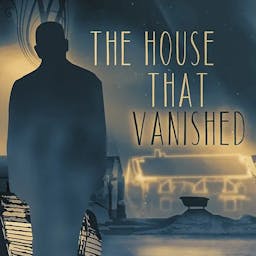Shipworm
4.4/5
Critic Rating
In this first of its kind feature-length audio movie, Wallace Conway wakes up to find he’s been implanted with an untraceable earpiece while sleeping. So long as he does everything the voice on the other end tells him, he and his family will live.Written by Zack Akers and produced by Skip Bronkie, Shipworm is the fourth podcast from Two-Up, the studio known for breaking ground in fiction (Limetown), musical (36 Questions), and documentary podcasts (The Wilderness).Shipworm stars Broadway luminaries Quentin Earl Darrington and Miriam Silverman, and is available on podcast platforms everywhere.
Critic Reviews
Score: 4.6
Bob Raymonda • Discover Pods • Jul 26, 2021
"Story-wise it felt like such a throwback. Shipworm reminded me of movies like the Colin Farrell movie Phone Booth (2002). If you’re not HBO big, people aren’t going to try to buy your limited series. And this feels very much like if they had tried to pitch its adaptation as a limited series it wouldn’t have gone anywhere. But because they went the “audio movie” route they can be presented as if they’re these trailblazers."
Score: 4.5
Gavin Gaddis • Discover Pods • Jul 26, 2021
"Shipworm is a fun 90s thriller flick in audio form, and I love that. Shipworm is brought down by the realities of modern entertainment production, but at its core it’s an enjoyable experience."
Score: 4
Nicholas Quah • Vulture • Apr 29, 2021
"While there’s a cinematic nature to the whole enterprise that makes it more than intriguing, Shipworm is weighed down by its writing. I know I’m kicking this thing in the shin, but I’ll make two points strongly in its favor. First of all, I really do appreciate the ambition. A feature-length audio project isn’t exactly unprecedented, but the notion of creating something that’s essentially a B-movie thriller purely as a podcast is a somewhat novel experience, and novelty is always welcome. The second is the sound design, which doesn’t just deliver on the basic stuff (setting scenes, creating a sense of place, conveying change and movement) but achieves some real highs in the seaborne third act, balancing between meteorological chaos and underwater serenity."












